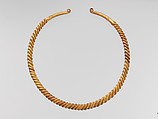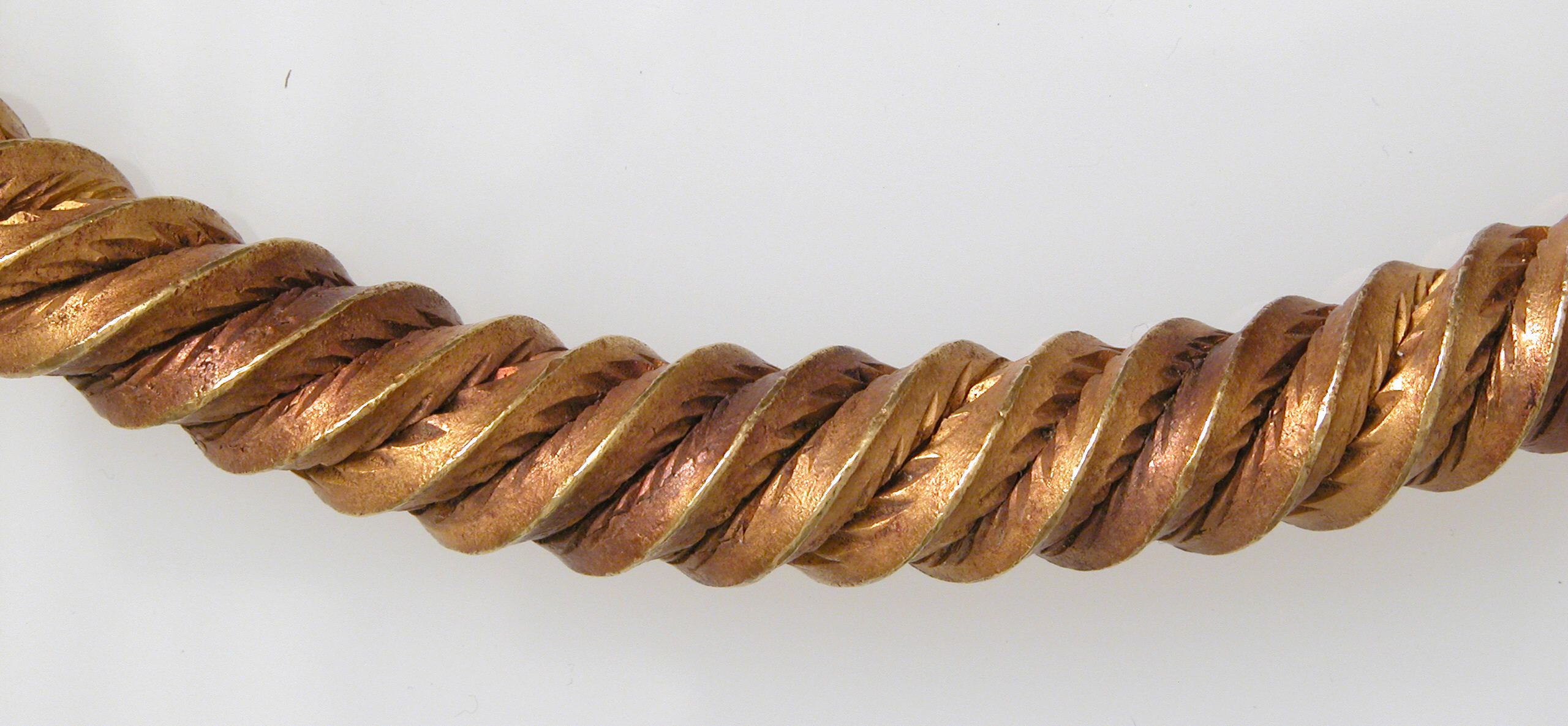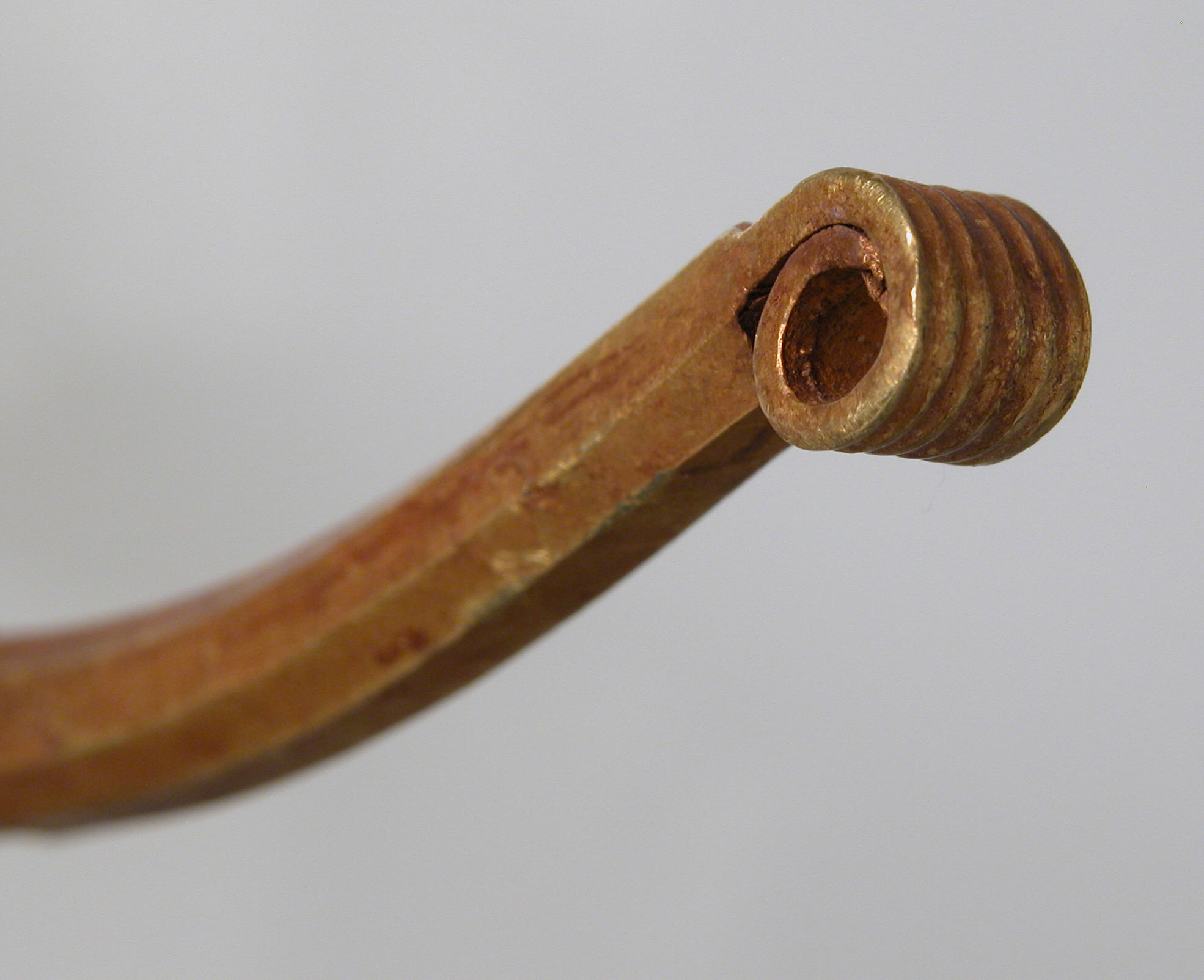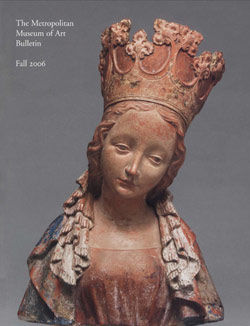Gold Neck Ring
This elegant and technically accomplished solid gold torque, which weighs more than a pound, is a superb example of the mastery of goldsmiths in Iron Age Europe. Such an imposing object would have been an emblem of status and power. Its excellent condition suggests that it might have served as a ritual offering or been placed in a tomb to accompany the dead into the afterlife. It may also simply have been deluxe jewelry. In about 50 B.C. the Roman historian Diodorus Siculus wrote that Celts in Gaul “gather gold that is used for ornaments not only for women but men as well, for they wear bracelets on their arms and wrists and also massive solid-gold collars around their necks.” The torque may have been made from a cast gold blank that was deeply incised or channeled along its length on four sides, evenly notched along some of the edges, and then twisted. Or it may have been constructed of four graduated square lengths of gold that were evenly notched and then twisted. Such techniques employing single or multiple strands of gold were used in several cultures in the first millennium B.C., but they were most widespread among the Celts, who populated much of western Europe.
Due to rights restrictions, this image cannot be enlarged, viewed at full screen, or downloaded.
This artwork is meant to be viewed from right to left. Scroll left to view more.





